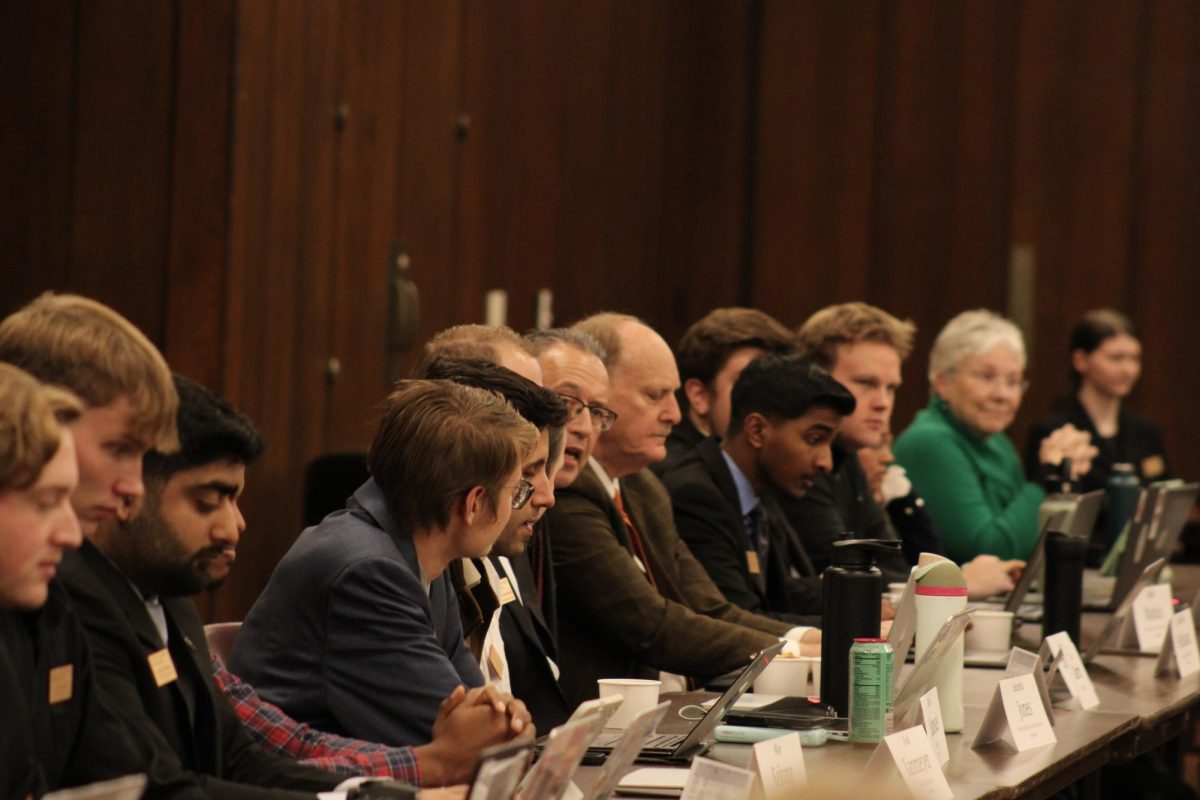More than one option for missile defense
August 26, 2001
Obstinacy and stubbornness are usually a fine way to get oneself into trouble. While resolve seems to have been in short supply in the Bush administration (see ANWAR, anti-dumping suits for Big Steel, stem cells, campaign finance reform), there’s been a particularly dangerous sticking point with Bush the Younger- Missile Defense.
Bush’s insistence on a national missile defense system makes several key assumptions and oversights which prove to be most dangerous to future American interests, namely the overshadowing presence of greater threats to which National Missile Defense provides no defense at all and the cost-effectiveness of such a system.
While the best missile defense is to stop pissing other nations off by meddling in every civil war that breaks out, it’s clear this won’t be policy anytime soon. Hence, I would like to present the case for the alternative – a regional, Theater Missile Defense.
Most rogue nations lack long-range missile delivery devices. To deliver a nuclear warhead 2,000 miles across the ocean to Los Angeles, is a much more complicated operation than one would normally assume. In fact, it involves the ability to launch a warhead into the exosphere, a daunting task for any nation which cannot even put its own satellites into space.
Real threats exist to U.S. security. One needs to only look back to the USS Cole incident. The United States has managed to evoke the ire of other nations by its constant meddling in regional world affairs, with deadly consequences to U.S. servicemen and women.
With strategic U.S. deployments everywhere in the world, it would be quite easy for any nation such as China, North Korea, or Iraq to hit a remote base or military deployment much simpler than say, getting a nuclear device to somewhere as remote as New York or Los Angeles. More specifically, the United States currently has a military base in Okinawa, Japan, well within the range of any missile sent from North Korea or China.
National Missile Defense can’t protect mobile deployments. The idea of a national missile defense is just that – national. Interceptor sites are fixed and cannot be easy re-deployed to remote locations, such as where troops have been deployed or where intelligence finds that real nuclear hot spots exist only a mobile, Theater Missile Defense can provide for this.
Threats to U.S. interests are more tactical than strategic in nature. It’s quite clear a nuclear-capable nation is more likely to go after what amount to sitting ducks than a city thousands of miles away, especially when such military deployments would most likely retaliate against any nation which launched such a nuclear strike.
An attack upon U.S. troop deployments would be a crippling blow to the United States’ strategic advantage, as well as morale, and assuming the current policies of nation-building continue, the incentive for other nations to make such attacks become only greater.
Theater Missile Defense does not upset the strategic nuclear framework. Let’s assume for a moment that the concerns of our European allies and the Russians are true – basically stated, that the possession of a nuclear shield against long-range, intercontinental ballistic missiles would afford the United States a strategic impunity, that is the ability to launch a strategic nuclear strike against anyone in the world without fear of a counter-attack.
Naturally, it would be in the strategic interests of nations to build nuclear stockpiles capable of overwhelming such a system of nations, and nations would then compete to match or overwhelm one another’s stockpiles – hence, an arms race.
Consider a Theater Missile Defense system. While providing a shield to U.S. interests abroad, it does not bring with it the strategic impunity that other nations fear. Furthermore, it doesn’t violate the constraints of the Anti-Ballistic Missile Treaty signed with Russia, disarming any claims of the United States withdrawing from its sworn agreements.
Theater Missile Defense is cheaper. Currently, the United States has been developing several Theater Missile Defense prototypes with the cooperation of several nations, including Germany, Italy, Israel, and Russia. One system, known as the Arrow, has a price tag of approximately $2 billion, as opposed to the estimated annual cost of $8.3 billion to develop a National Missile Defense system.
Theater Missile Defense is much cheaper with respect to the fact that such devices can be redeployed and mass-produced, as opposed to fixed anti-missile sites which are very expensive to build and prove to be quite immobile.
What must ultimately be considered is the likelihood of the use of such a system as measured against its expected cost. In a world where nuclear power is increasingly becoming more available to small, militaristic forces and terrorists, warheads for strategic purposes (Russian ICBMs aimed at Los Angeles) are becoming much less of a threat than the very real presence of small, tactical nukes aimed a few hundred miles away in cross-border disputes.
Thus, Theater Missile Defense presents us with a cheaper, more viable solution to world peace and security of American lives and interests than any National Missile Defense system can in the foreseeable future. One can only hope top brass in the Defense Department will come this realization soon as well.
Steve Skutnik is a senior in physics from Palm Harbor, Fla.






